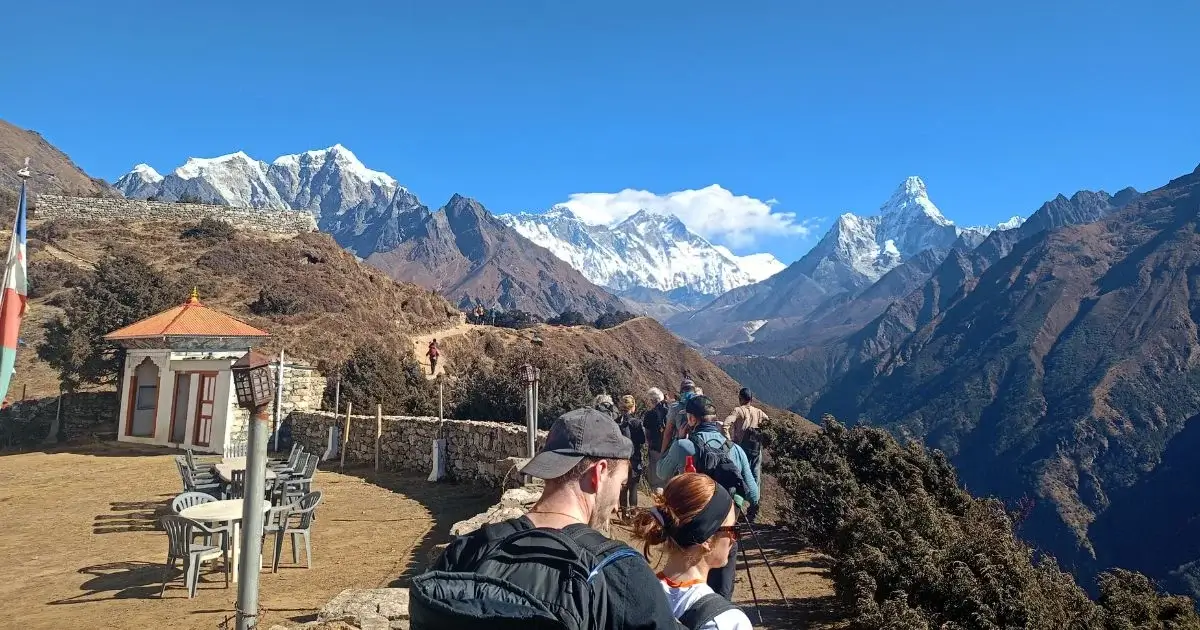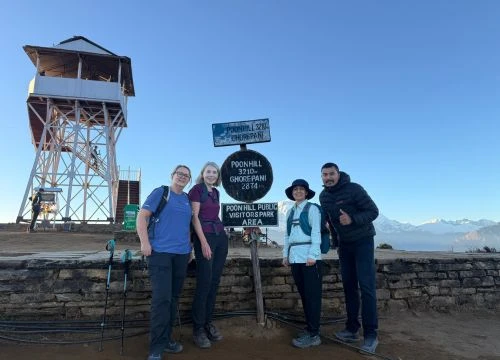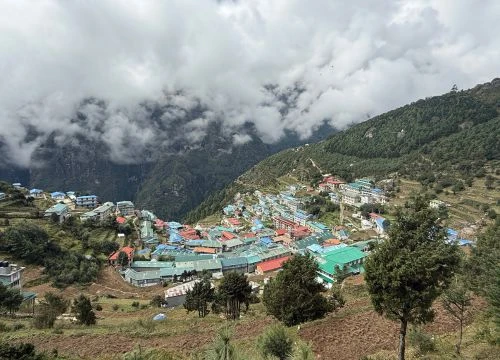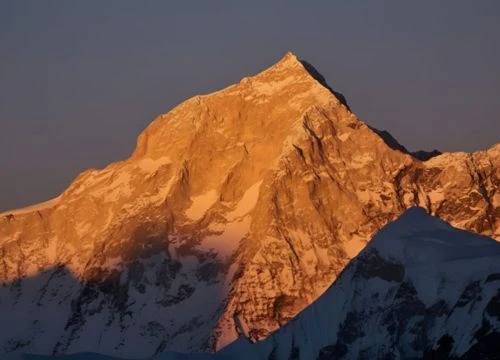Step 1: Define Your Trekking Goals and Adventure Requirements
Before evaluating any travel agency in nepal, honest self-assessment prevents dangerous mismatches between your abilities and chosen trek through challenging terrain. Therefore, understanding your limitations ensures a safer and more enjoyable trekking experience.
Assess Your Fitness Level and Mountain Experience
Your fitness reality at sea level determines mountain performance at altitude. If three flights of stairs leave you breathless, attempting the Everest Base Camp trek represents extreme self-deception rather than adventurous spirit. Instead, start with shorter acclimatisation routes like Poon Hill trek (3,210 m) before tackling serious altitude challenges in various trekking regions.
The most common mistake I see is travellers booking purely on price without checking licensing, safety measures, or guide qualifications. They often assume all companies operate at the same standard, which is far from true. During my years of trekking with different companies, from small family-run outfits in Kathmandu to larger, internationally partnered agencies, I've observed how some stand out for their meticulous safety protocols and deep cultural integration, while others cut corners on guide training and porter welfare.
Popular trekking routes in Nepal vary dramatically in physical demands:
Professional trekking operators ask probing questions about hiking history rather than simply accepting payment. Consequently, they'll enquire about your longest previous trek, altitude experience, and medical conditions affecting mountain performance during Himalayan trekking adventures.
Budget Planning and Hidden Cost Awareness
Trekking costs range from $40-65 daily for quality teahouse adventures to $120+ for luxury camping expeditions. However, hidden expenses often surprise budget-conscious travellers seeking best value:
Domestic flights to trek starting points ($150-300)
Personal gear rentals ($25-45 daily)
Guide and porter tips ($20-30 per person daily)
Emergency evacuation insurance ($75-200)
Weather delay accommodation ($40-80 daily)
Furthermore, reputable trekking operators build transparency into pricing structures. Meanwhile, companies quoting unrealistically low prices compromise safety through underpaid staff, substandard equipment, or surprise mid-trek charges. I always advise spending a bit more for a company that has strong safety training, quality equipment, and insured staff. The extra investment is worth avoiding risks in high-altitude terrain.
Group Dynamics and Customisation Needs
Smaller groups enable personalised attention and flexible scheduling. Furthermore, optimal ratios maintain one experienced trekking guide per 4-6 trekkers, with assistant guides added for larger parties. This ensures proper safety oversight while maintaining the intimate experiences Nepal's mountains deserve.
Solo female trekkers should prioritise companies offering female guide options and robust safety protocols. Similarly, family groups need operators experienced with children's altitude limitations and shorter daily distances. Additionally, luxury travellers expect private facilities, gourmet meals, and premium camping equipment.
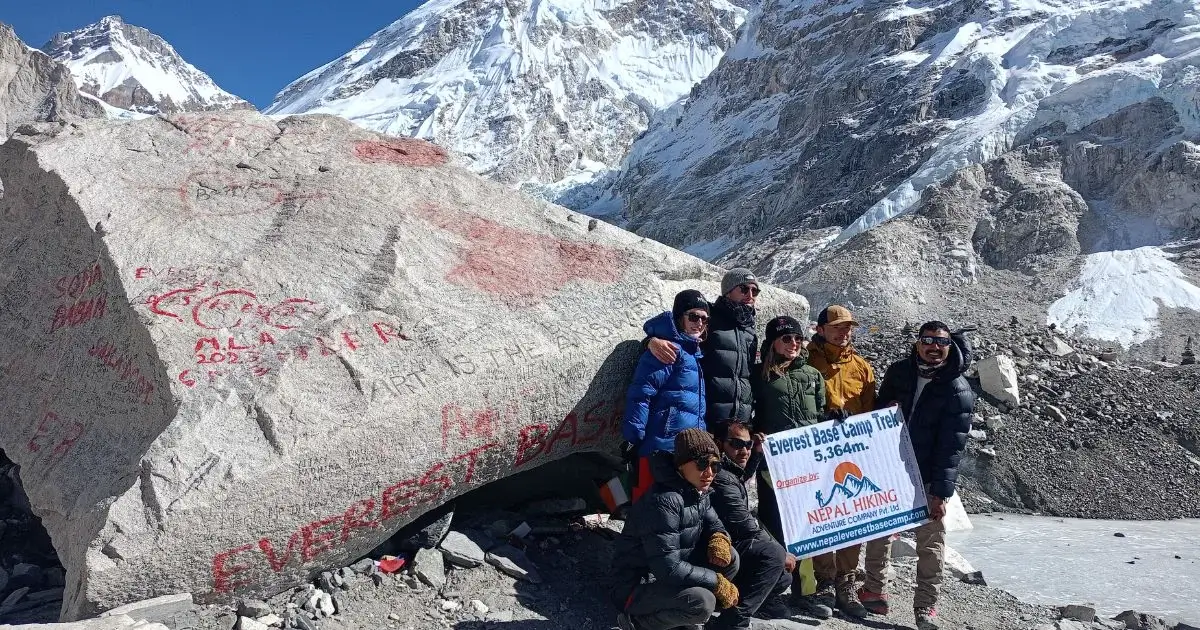
Step 2: How to Choose the Best Trekking Company in Nepal Through Legal Verification
Nepal's trekking industry operates under strict regulations. However, enforcement varies significantly across different tour company categories.
Essential Government Licenses and TAAN Membership
Every legitimate travel company must possess these critical legal documents:
Primary Registrations:
TAAN (Trekking Agencies Association of Nepal) membership
Nepal Tourism Board registration for tourism operations
Municipal business licences for commercial activity
Tax registration certificates proving legal business status
Request to examine original documents rather than photocopies. Furthermore, authentic certificates display official government seals, current renewal dates, and verifiable registration numbers. The Trekking Agencies Association of Nepal website maintains a searchable member directory for cross-reference verification.
International Certifications and Insurance Coverage
Reputable companies often maintain memberships in international organisations:
Adventure Travel Trade Association (ATTA): Sustainable tourism practices
Nepal Mountaineering Association: Technical climbing standards
International Porter Protection Group: Ethical labor practices
Moreover, insurance coverage should encompass comprehensive liability protection, workers' compensation for all staff, and emergency rescue coverage reaching $100,000. Therefore, request current policy certificates and verify coverage directly with insurance providers.
Many trekkers don't check if the company's insurance covers staff as well as clients. Staff insurance is vital - it ensures porters and guides are cared for if injured, and it's often a sign of a company's ethics.
Spotting Fraudulent Documentation
Fake credentials appear increasingly sophisticated. Consequently, careful inspection becomes essential when you check if the company meets professional standards:
Warning indicators include:
Blurry document photos or obvious digital alterations
Inconsistent formatting or spelling errors in official papers
Reluctance providing originals for physical inspection
Generic email addresses instead of official company domains
Therefore, verify credentials directly with issuing organisations. TAAN provides phone verification services, while the Nepal Tourism Board maintains online databases for registered operators.
Step 3: Evaluate Experience and Track Record
Years in operation indicate stability. However, recent performance matters more than ancient history when selecting operators providing high-quality trekking services.
Company Longevity and Trek Volume
Established local tour operators survive Nepal's political instability, natural disasters, and economic fluctuations through adaptability. Moreover, they build strong relationships within local communities. They've refined safety protocols through real-world experience and built trust among mountain villages while developing extensive local knowledge.
Look for continuous operation spanning at least 7-10 years. However, newer operators led by veteran guides from established companies can provide exceptional service. Therefore, the key factor remains leadership experience rather than company age alone.
A budget group heading to Manaslu hired an unlicensed operator who subcontracted everything last minute. Their "guide" spoke minimal English, they lacked the restricted area permit, and the group was forced to turn back after three days, losing most of their money. This demonstrates why proper vetting matters.
Ask specific performance questions:
How many trekking tours do you operate annually across different trekking areas?
What percentage of clients successfully reach intended destinations?
How do you handle altitude sickness emergencies during international trekking expeditions?
Can you provide recent reviews and testimonials from clients?
Success Stories and Problem-Solving Examples
Request detailed case studies showcasing problem-solving abilities. Furthermore, excellent trekking companies eagerly share stories of helping injured trekkers, adapting to severe weather, or facilitating meaningful cultural exchanges respecting local culture.
During an Everest Base Camp trek, a client from Europe developed symptoms of High Altitude Pulmonary Edema (HAPE) at Lobuche. The guide's Wilderness First Responder training kicked in, and they coordinated an immediate helicopter evacuation through pre-arranged insurance. The client later credited the company with saving his life.
Specific examples might include:
Emergency evacuations and successful outcomes
Route modifications due to trail damage or weather
Cultural programs arranged with local communities
Equipment failures resolved through local connections
Be skeptical of companies claiming 100% success rates. Moreover, mountain conditions inevitably require itinerary changes, early descents, or medical evacuations. Honest operators acknowledge these realities while demonstrating professional emergency responses.
Emergency Response Capabilities
Mountains test everyone eventually. Therefore, the crucial factor becomes how a trekking company ensures proper response when situations turn dangerous during your trekking experience.
I've personally assisted trekkers who had to abandon their trek midway because their company failed to spot early altitude sickness signs. In one case, a solo trekker on the Annapurna Circuit had no insurance arranged by their operator and nearly faced a $5,000 helicopter bill before we intervened through our contacts.
Professional operators should provide concrete examples of recent emergency responses. Additionally, this includes specific rescue operations, communication protocols with helicopter services, staff certifications in wilderness medicine, and established relationships with medical facilities.
Step 4: Assess Guide Qualifications and Porter Welfare
Your trek's success depends entirely on people leading you through challenging Himalayan terrain. Furthermore, their commitment to ethical practices supporting local guides and porters proves essential for a responsible trekking experience.
Guide Certifications and Language Skills
A good guide with professional qualifications must possess comprehensive credentials beyond basic mountain enthusiasm:
Essential Requirements:
Government-issued guide licences for legal commercial guiding
Wilderness First Aid certification for medical emergency response
High Altitude Medicine knowledge for altitude sickness recognition
English proficiency enabling clear safety communication
The best tour companies employ expert guides combining technical expertise with storytelling ability and deep cultural knowledge. Moreover, they serve simultaneously as safety managers, medical responders, and cultural ambassadors throughout your trekking adventure in various trekking regions.
An expert guide recognises cerebral edema symptoms immediately and initiates descent protocols that save lives. Meanwhile, inexperienced staff might dismiss dangerous warning signs as normal altitude adjustment.
Ethical Porter Treatment Standards
Porter welfare reflects a company's core values and operational integrity. Therefore, a company that provides responsible services following international guidelines offers:
Fair wages: Minimum $20-28 daily (above Nepal's average wage)
Proper equipment: Warm clothing, quality footwear, protective gear
Weight limits: Maximum 30 kg, including the porter's and Nepal's personal belongings
Insurance coverage: Comprehensive medical and accident protection
Equal treatment: Accommodation and meals matching trekker standards
The International Porter Protection Group establishes global standards for ethical treatment. One operator I know in the Khumbu region provides porters with down jackets, medical coverage, and fair wages even during low season. They limit porter loads to 25 kg instead of the common 30-35 kg.
Consequently, look for companies explicitly following these guidelines and willing to discuss their implementation, demonstrating they respect local mountain communities.
Staff-to-Trekker Ratios
Appropriate staffing ensures both safety and quality service throughout trekking areas:
Small groups (2-4 people): One senior guide minimum
Medium groups (5-8 people): Senior guide plus assistant guide
Large groups (9+ people): Multiple expert guides with clear command structure
Each porter typically carries equipment for 2-3 trekkers. Additionally, additional staff might include cooks for camping expeditions, liaison officers for restricted areas, and assistant guides for technical route sections.
Step 5: Review Service Inclusions and Itinerary Flexibility
Comprehensive service comparison reveals significant differences between seemingly similar packages offered by different local tour operators providing the best services.
Standard Service Inclusions
Quality companies should clearly outline what's offered by the company:
Basic Inclusions:
Accommodations: Teahouse lodging or quality camping equipment
Meals: Three daily meals throughout the trekking period
Permits: TIMS cards, national park entries, restricted area fees
Transportation: Airport transfers, domestic flights when required
Guide services: Licensed guides and porter support
Premium packages might add equipment rentals, sleeping bags, technical clothing, or expedition duffel bags. However, personal gear selection remains your responsibility for comfort and safety during trekking activities.
Altitude Acclimatisation and Route Flexibility
Rigid itineraries work only under perfect conditions. Furthermore, mountains demand adaptability for safety and success. The best trekking agency builds flexibility into schedules through:
Buffer days: Weather delays and flight cancellations
Acclimatisation rest: Additional days at key altitude gains
Route alternatives: Trail damage or seasonal closure backup plans
Medical contingencies: Injury or illness response options
Moreover, proper acclimatisation follows "climb high, sleep low" principles. Rapid altitude gain significantly increases acute mountain sickness risks, especially above 3,500 meters throughout different trekking destination options.
Cultural Enhancement Programs
Specialised services differentiate exceptional companies from basic operators providing high-quality trekking experiences:
Cultural experiences: Monastery visits, local family meals, festival participation
Photography support: Sunrise shoots, technical guidance, equipment assistance
Wildlife education: Bird identification, flora knowledge, conservation awareness
Spiritual elements: Meditation sessions, yoga instruction, Buddhist philosophy
On a Mardi Himal trek, the operator added an unscheduled stop in a small Gurung village after hearing about a local festival. It turned into the most memorable night of the trip, with dancing, music, and homemade raksi under the stars. For me, it's when a trek connects you deeply with both the landscape and the people - when safety, comfort, and cultural respect are balanced so well that the mountains feel like home rather than just a destination.
These enhancements create memorable experiences. However, they shouldn't substitute for fundamental safety measures and guide competency standards during your trek in Nepal.
Step 6: Analyse Safety Protocols and Risk Management
Comprehensive safety systems separate professional operators from amateur enthusiasts risking client lives through inadequate preparation during trekking in the Himalayas.
Medical Equipment and Evacuation Plans
Professional first aid kits must include altitude-specific medications:
Essential Medical Supplies:
Altitude drugs: Diamox for prevention, dexamethasone for severe cases
Pain management: Ibuprofen, acetaminophen for headaches and inflammation
Infection treatment: Broad-spectrum antibiotics for stomach and respiratory issues
Diagnostic tools: Pulse oximeters, thermometers, blood pressure monitors
Furthermore, evacuation protocols account for helicopter rescue limitations. Weather conditions frequently prevent flights above 4,500 meters, requiring ground-based evacuation strategies and established relationships with rescue organisations.
Remote treks like Upper Dolpo, Mount Kanchenjunga, or Manaslu demand higher quality operators because evacuation routes are long and medical facilities scarce.
Weather Monitoring and Communication
Professional weather monitoring involves multiple daily forecast checks and communication with other mountain teams. Therefore, local guides coordinate with helicopter pilots, rescue services, and local meteorological stations for current condition updates.
Altitude sickness prevention requires systematic approaches. Additionally, this includes gradual ascent profiles, symptom recognition training, immediate response protocols, and medication administration guidelines throughout your trekking experience.
International Safety Standards Compliance
Many reliable trekking companies reference international safety frameworks:
UIAA standards: International climbing and mountaineering protocols
WHO guidelines: High-altitude travel medical recommendations
Nepal Tourism Board requirements: National safety and insurance mandates
Moreover, companies should document safety procedures comprehensively and provide detailed pre-trek briefings covering altitude sickness recognition, emergency communication, and evacuation protocols.
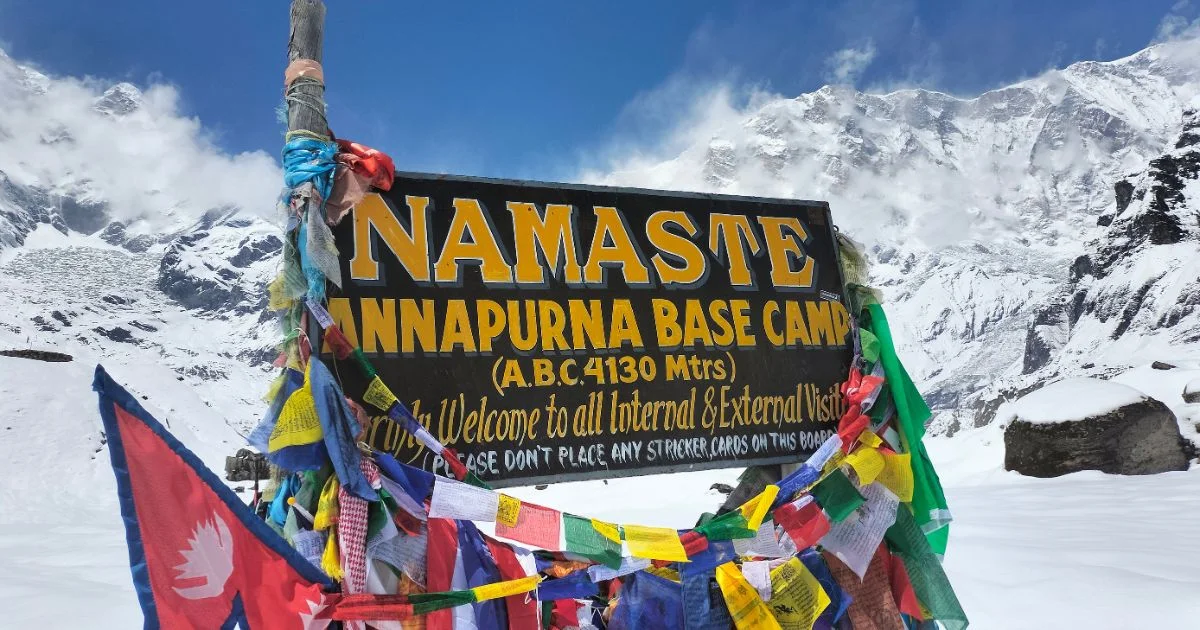
Step 7: Compare Pricing and Value Propositions
Price comparison requires understanding service inclusions versus potential hidden charges when you find a trekking company that interests you.
Transparent Cost Breakdowns
Honest trekking operators provide detailed cost analysis. Furthermore, this includes staff wages, accommodation expenses, meal costs, transportation fees, permit charges, equipment provision, and company operational margins.
Common hidden charges include:
Single supplement fees for solo travelers
Equipment rental costs for personal gear
Excess baggage charges for domestic flights
Mandatory gratuities and service charges
Travel insurance requirements and additional costs
Multi-Company Quote Comparisons
Request identical itinerary quotes from 4-5 established operators. Meanwhile, significant price variations typically indicate different service levels, hidden costs, or operational quality differences.
Focus on total value rather than lowest advertised price. Therefore, a $400 difference over a 14-day trekking tour in Nepal might represent better qualified guides, superior food quality, enhanced safety equipment, or more comprehensive insurance coverage.
Quality Everest Base Camp treks range from $85 to $130 daily for comprehensive packages. Additionally, this includes experienced guides and proper safety standards, representing the best value for your investment.
Recognising Unrealistic Pricing
Extremely cheap operators reduce costs through dangerous shortcuts:
Unlicensed guides lacking emergency response skills
Poor porter treatment with inadequate wages and equipment
Substandard accommodations or unsafe camping gear
Limited insurance coverage for medical emergencies
Compromised safety equipment and evacuation plans
Furthermore, the actual cost of "budget" operators often emerges during treks when problems require expensive emergency interventions. Instant red flags include unrealistic trek durations (EBC in 9 days), vague inclusions, reluctance to share guide credentials, and prices that are half the average rate.
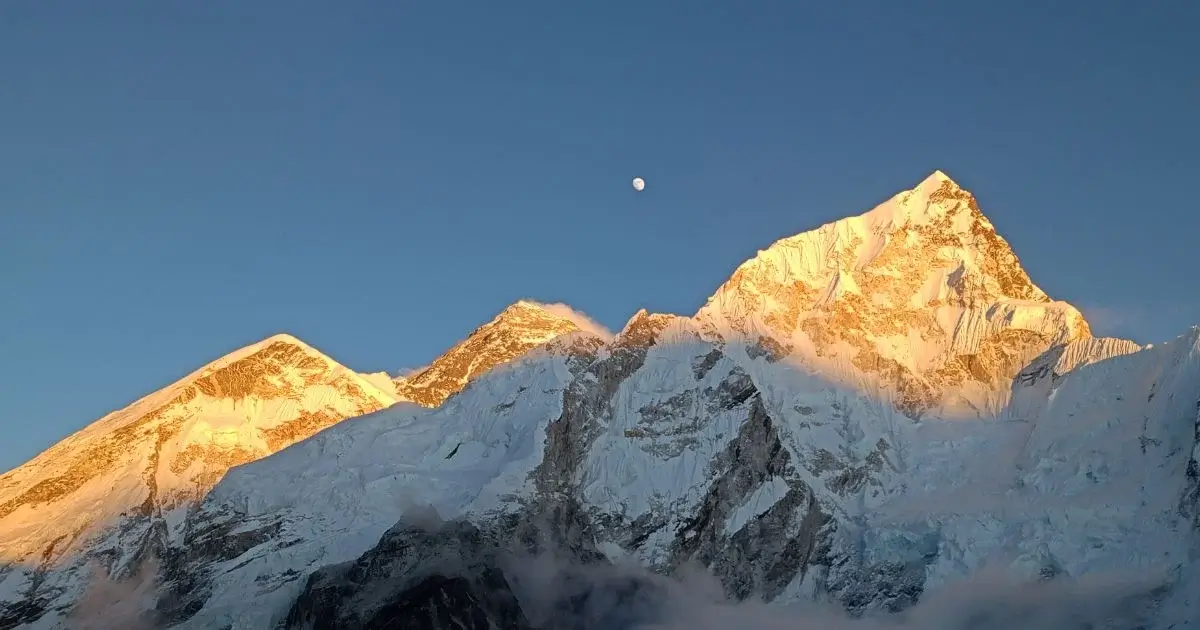
Step 8: Research Digital Reputation and Client Feedback
Digital reputation analysis reveals recent performance trends and client satisfaction patterns across different platforms. Therefore, thorough research helps identify the reliability of a trekking company.
Multi-Platform Review Analysis
Multiple review platforms provide diverse perspectives on company performance:
Key Review Sources:
TripAdvisor: Comprehensive international traveler experiences with detailed narratives
Google Reviews: Local and international feedback with recent trek reports
Trekking forums: Enthusiast communities discussing technical aspects and safety issues
Trustpilot: Independent review verification reducing fake testimonial risks
Focus on review patterns rather than isolated complaints or excessive praise. Moreover, recent reviews carry more weight than older testimonials, especially given Nepal's rapidly changing conditions post-2015 earthquake and COVID-19 impacts.
Operators now have to be more transparent with cancellation policies and are more open to private or small-group treks. There's also increased demand for better sanitation and health screening on the trail.
Pay attention to whether the company responds professionally to criticism. Therefore, this indicates customer service commitment and problem-solving attitudes.
Social Media Activity Assessment
Active social media presence suggests ongoing operations and current client engagement:
Regular posting with current trek photos and condition updates
Client interactions through real-time testimonials and engagement
Response times for customer inquiry handling efficiency
Content quality featuring professional photography and informative updates
However, remain cautious of fake testimonials, purchased followers, or artificially inflated engagement metrics misrepresenting actual company performance.
Website Quality Evaluation
Professional websites reflect serious business operations and client commitment:
Contact details, such as physical addresses and various forms of communication
Detailed itineraries with comprehensive trek descriptions and realistic expectations
Staff profiles showcasing guide qualifications, experience, and background trekking information
Current photography featuring recent images from actual company treks
Poor websites featuring generic stock photos, vague descriptions, or limited contact information suggest amateur operations with questionable reliability.
Step 9: Test Communication Standards and Responsiveness
Pre-trek communication quality accurately predicts service levels throughout your mountain adventure. Therefore, thorough evaluation during initial contact phases proves essential.
Initial Inquiry Response Quality
Professional companies respond to enquiries within 24 hours with detailed, personalised information addressing your specific questions and concerns.
Quality responses include:
Relevant questions about your experience and fitness level
Detailed explanations of best services and comprehensive inclusions
Honest assessments of trek difficulty and realistic requirements
Clear pricing with transparent breakdowns
Realistic timelines for decision-making and booking processes
Moreover, warning signs include generic template responses, immediate pressure for deposits, inability to answer technical questions, or unrealistic promises about weather and mountain conditions.
Company Leadership and Transparency
Research company ownership and leadership backgrounds thoroughly. Additionally, established operators often feature interesting founding stories, clear management structures, and transparent business practices.
Transparency indicators include:
Owner biographies and photos featured on company websites
Physical office locations with verifiable addresses in Kathmandu
Local community endorsements and relationship documentation
Industry association participation and leadership roles
Long-term client relationships and repeat business patterns
Booking Policies and Flexibility
Reasonable deposit policies protect both parties while maintaining necessary flexibility:
Standard deposits: 25-35% to secure bookings during peak seasons
Payment schedules: Clear timelines for remaining balance payments
Cancellation policies: Fair terms considering advance notice periods
Insurance requirements: Travel insurance recommendations and verification
Force majeure clauses: Natural disaster and political instability protections
Furthermore, avoid companies demanding full payment upfront or offering no cancellation protections. Legitimate operators understand that international travel involves uncertainties requiring flexibility.
Red Flags: Warning Signs to Avoid
Recognising warning signals prevents dangerous and expensive mistakes that could ruin your Himalayan trekking experience. Therefore, careful evaluation protects both your safety and investment.
Common Danger Indicators
Multiple red flags often appear simultaneously in problematic companies:
Consistent negative reviews highlighting patterns of safety issues or poor service
Unverifiable claims including impossible safety records or exaggerated experience statements
Price guarantees promising "lowest prices" that typically involve hidden compromises
Fake credentials featuring counterfeit licenses or non-existent organisational memberships
No physical presence with missing office locations or unverifiable contact information
Trust your instincts during initial interactions. Furthermore, if communication feels unprofessional or information seems inconsistent, investigate further before making any commitments.
Unrealistic Promises and Safety Dismissals
Unrealistic promises indicate inexperienced or dishonest operations:
Weather guarantees: Claiming control over unpredictable mountain conditions
Impossible timelines: Compressing treks beyond safe acclimatisation schedules
Altitude dismissal: Minimising altitude sickness risks or prevention needs
Dangerous shortcuts: Promoting risky route variations to save time or money
Seasonal ignorance: Operating during known dangerous weather periods
Mountains operate by natural laws, not marketing promises. Therefore, companies ignoring fundamental safety principles endanger client lives for profit margins.
High-Pressure Sales Tactics
High-pressure sales approaches suggest desperation or dishonest intentions:
Urgency creation: Artificial deadlines for booking decisions
Cash-only payments: Avoiding traceable payment methods and accountability
Vague contracts: Unclear terms and conditions containing hidden clauses
Service deflection: Avoiding detailed discussions about safety and logistics
Competitor attacks: Unprofessional criticism of other established operators
Professional companies focus on matching services to client needs. Therefore, they avoid pressuring immediate decisions through artificial scarcity or urgency tactics.
Making Your Final Decision
Decision-making requires systematic evaluation followed by thorough preparation for challenging mountain conditions. Furthermore, selecting the right trekking ensures your adventure meets safety and quality standards.
Scoring Matrix Development
Develop a weighted scoring system based on your personal priorities. My recommendations weigh safety protocols (35%), guide experience (25%), value for cost (20%), ethical practices (15%), and communication quality (5%).
Safety standards: Emergency protocols, medical equipment, evacuation plans (35% weight)
Guide qualifications: Experience, certifications, language skills (25% weight)
Value proposition: Transparent pricing, service inclusions, flexibility (20% weight)
Sustainability practices: Environmental impact, community support, ethical treatment (15% weight)
Communication quality: Responsiveness, transparency, professionalism (5% weight)
Rank your top three choices and conduct final detailed comparisons. Therefore, focus on criteria most important for your specific trek and comfort level requirements. This helps you get to choose your guide and company with confidence.
Pre-Trek Preparation Essentials
Once you've selected your preferred company:
Contract review: Read all terms and conditions carefully before signing
Insurance purchase: Obtain comprehensive travel and evacuation coverage
Physical training: Begin conditioning programs immediately for altitude preparation
Cultural research: Learn about local customs, tipping practices, respect the local culture
Gear preparation: Organise equipment lists with company guidance and recommendations
Moreover, confirm all arrangements in writing and maintain copies of important documents both physically and digitally for emergency reference.
Once, during a trek to Langtang, a guide surprised everyone by producing a birthday cake at 3,800m - baked in a teahouse oven using improvised equipment. It became the highlight of the trek, showing how the right company can create magical moments even in challenging environments.
Problem Resolution Strategies
Problems during planning phases often predict operational difficulties:
Documentation: Keep records of all communications and agreements
Escalation: Request management involvement for unresolved issues
Alternative evaluation: Consider backup companies if problems persist
Community consultation: Seek advice from experienced trekkers and online communities
Professional judgment: Trust your assessment of company reliability and competence
Changing companies before departure proves preferable to suffering consequences in remote mountain environments. Therefore, options become extremely limited once your trek begins. Finding the right company ensures your safety and success.
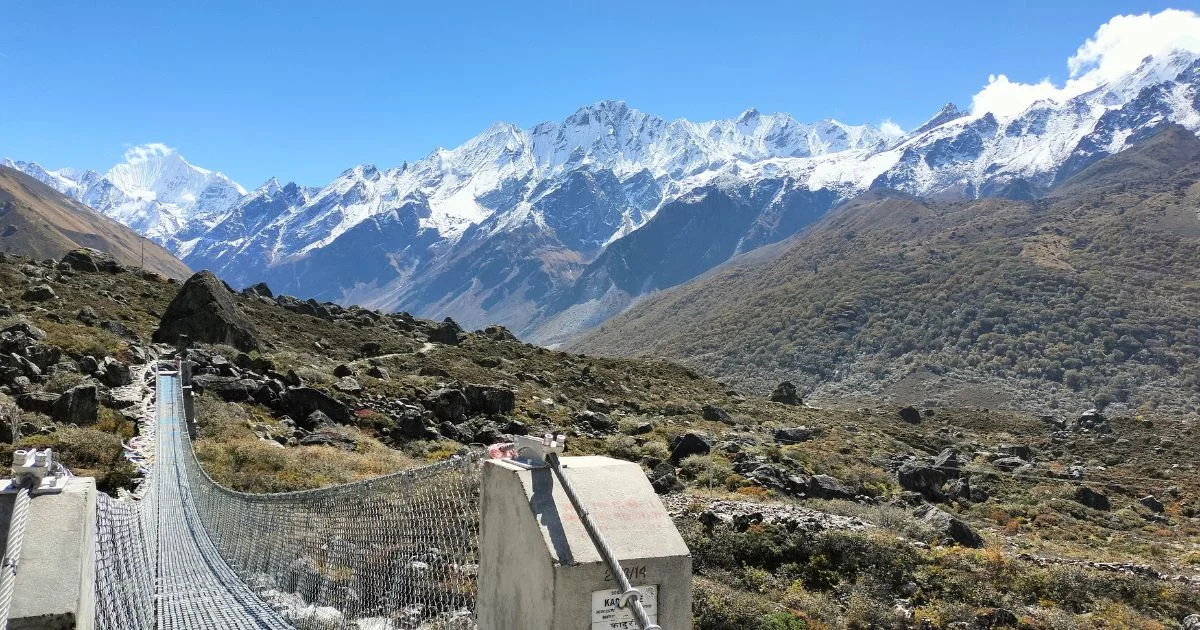
Sustainable Tourism and Community Support
Selecting the best trekking tour agency preserves Nepal's mountain environments for future generations while supporting local communities economically. Furthermore, responsible trekking practices ensure long-term sustainability.
Environmental Impact Considerations
Sustainable companies implement comprehensive environmental policies. Additionally, this includes Leave No Trace principles, plastic reduction through water purification systems, local sourcing supporting mountain communities, and trail maintenance contributions.
Ask about specific environmental initiatives and their implementation during actual treks. Therefore, generic statements about "eco-friendly practices" require concrete examples and verification for responsible trekking operations.
Supporting Local Communities
Ethical tourism directly benefits mountain villages through:
Fair wages above Nepal's average
Local employment from mountain communities
Community projects supporting schools and health clinics
Cultural preservation respecting traditional trekking culture
Responsible companies should explain exactly how trekking fees support local communities. Therefore, this goes beyond basic service payments and employment opportunities.
Carbon Footprint Reduction
Climate-conscious operators implement carbon reduction strategies. Furthermore, this includes offset programmes, renewable energy use, equipment sharing programmes, and public transport efficiency improvements.
While perfect environmental practices remain impossible in remote mountain settings, responsible companies make genuine efforts toward sustainability and carbon reduction.
The best company combines mountain expertise with environmental stewardship. Therefore, they create transformative experiences while preserving these sacred peaks for future generations of adventurers.
Why Choose Nepal Everest Base Camp Co. Over Other Nepal Trekking Companies?
With two decades of guiding trekkers through Nepal's mountains, we stand out from other operators. Here’s why:
What Matters Most: A Comparison
Guide Experience: Our guides average 15+ years of experience. Others typically have 3–7 years.
Safety Record: We have zero incidents in 20 years. Others report 3–5 incidents annually.
Porter Treatment: We pay porters $28 daily with full insurance. Others offer $15–20 with minimal protection.
Success Rate: 98.7% of our trekkers reach their destinations. Industry average is 85–90%.
Certifications: Our guides hold Wilderness First Responder and High Altitude Medicine certifications. Others provide basic first aid only.
Every porter in Nepal deserves dignity. We lead by example with fair wages and proper equipment. While some companies cut corners, we have built our reputation on consistent performance through thousands of challenging conditions.
The mountain does not care about your budget. When altitude sickness strikes at 5,000 meters, you need guides with 20 years of experience, not just basic training. This commitment has earned us recognition as one of the best Nepal trekking operators by clients and industry peers.
Why the Right Trekking Company Matters
Understanding how to choose the best trekking company in Nepal determines whether your Himalayan adventure becomes a life-changing experience or dangerous ordeal. Furthermore, the research investment pays dividends through enhanced safety, cultural authenticity, and unforgettable memories lasting a lifetime. Professional trekking company transforms challenging mountain environments into accessible adventures while maintaining respect and caution these sacred peaks demand.
Key success factors include verified credentials and government registration, experienced guides with comprehensive safety training, transparent pricing with clear service inclusions, proven emergency response protocols and medical capabilities, authentic client testimonials from recent expeditions, and ethical practices supporting local communities and environmental preservation. Moreover, these elements separate exceptional companies from thousands of operators competing through price cutting and unrealistic promises.
Your guide to Nepal adventure deserves expertise and dedication that only established, professional operators provide. That's exactly why you'll find Nepal Everest Base Camp Co. stands apart - because when you spend extra time researching and comparing options, your adventure will meet the highest standards for safety, authenticity, and personal fulfillment with guides who understand both the beauty and dangers of these magnificent mountains. Ready to plan your Himalayan adventure? Contact us to discuss how we can make your Nepal trekking dream a reality.
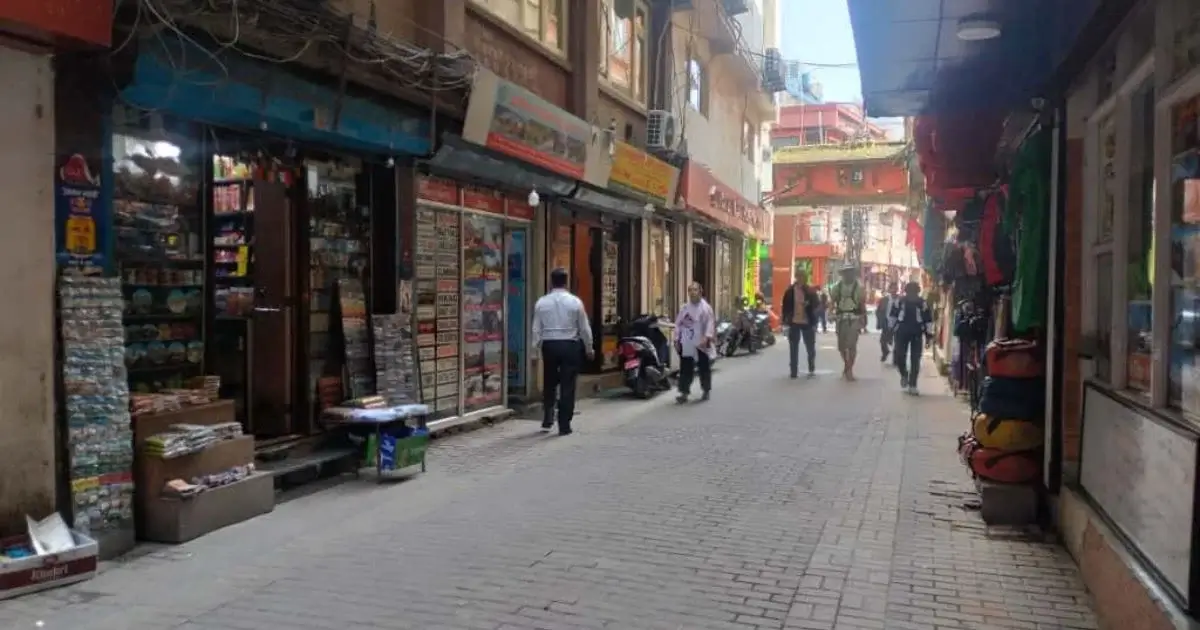
Frequently Asked Questions
What makes a trekking company the best in Nepal?
The best tour companies combine mountain expertise with comprehensive safety protocols, proper licensing, experienced certified guides, transparent pricing, and genuine commitment to trekker safety and community welfare. Moreover, they provide excellent trekking experiences while maintaining highest safety standards.
Should I choose a local company or international operator?
Local companies typically offer superior value, direct mountain expertise, authentic cultural connections, and direct community support. Furthermore, they often provide identical services to international operators at lower costs while offering better access to local culture and extensive local knowledge.
What are average costs for reputable travel agencies?
Quality companies charge $85-130 daily for comprehensive packages. Additionally, this includes experienced guides, proper safety equipment, all permits, accommodation, and meals with transparent pricing structures representing best value for professional trekking guide services.
How can I verify a company's credentials?
Check TAAN membership and Nepal Tourism Board registration, examine original documents with government seals, verify through official databases, and cross-reference with multiple sources. Therefore, whether the company meets professional standards requires thorough verification.
What safety standards should I expect?
Professional operators provide wilderness first aid certified guides, comprehensive medical kits, established evacuation protocols, proper insurance coverage, and detailed emergency response procedures. Moreover, they maintain international safety standards throughout your trekking experience.
How do I ensure sustainable trekking practices?
Choose companies demonstrating environmental responsibility, fair porter treatment, community development support, carbon reduction efforts, and transparent sustainability initiatives. Therefore, concrete implementation examples prove their commitment to responsible trekking and preserving local culture for future generations.
